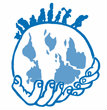1. COVID-19 has highlighted an urgent need for global collective action to substantially scale up investments and support to strengthen the capacity of developing countries to prevent, prepare for, and respond to the next pandemic. The pandemic has demonstrated that investing in prevention, preparedness, and response (PPR) is a global public good that benefits every nation—regardless of income or wealth. This requires investments at the country, regional, and global levels. It is the collective responsibility of the international community to ensure that the necessary investments in PPR are made, on an urgent and sustained basis, so that low-income and lower-income countries and regions are better prepared to face the next pandemic.
2. Domestic financing will have to play the leading role in strengthening PPR. All countries, developing and industrialized alike, must step up domestic investments in the core capacities needed to prevent, detect, and contain future pandemics, in accordance with the International Health Regulations. Governments will in many cases have to embark on reforms to mobilize and sustain additional domestic resources, to build up these pandemic-related capacities and strengthen health systems more broadly, while at the same time enabling their economies to return to durable growth.
3. However, domestic actions alone will not be sufficient to prevent the next pandemic; they will need to be complemented by enhanced international financing for PPR investments, particularly for the poorest countries, and including some key international elements of PPR investments. Independent reports and studies commissioned over the past two years, including the G20 High Level Independent Panel’s (HLIP) report from June 20211 and the joint paper on PPR financing needs and gaps prepared by the WHO and World Bank for the G20 Finance and Health Task Force, updated in March 2022,2 , among others, have underscored that we can only avoid future pandemics, or reduce the scale and costs of outbreaks, if the international community invests substantially more than it has been willing to do in the past – a mistake for which the world is now paying for many times over in dealing with damage caused by COVID-19. These reports have estimated that international financing for pandemic prevention, preparedness, and response (PPR) needs to increase by between US$10.5 billion to US$15 billion per year over the next five years, with sustained investments in subsequent years. These reports have also recommended a pooled financing mechanism to enhance the impact of such funding through catalytic and gap filling investments.
4. The purpose of this paper is to examine the modalities through which international financing of PPR for the developing world, including elements requiring investments at country, regional and global levels, can be strengthened. The paper begins with a review of the existing institutions and actors engaged in the international financing of PPR and then offers some recommendations on how to augment the global health security financing system through a pooled financing mechanism to mobilize and deploy additional resources for increased investments in PPR through collective, multilateral action.
